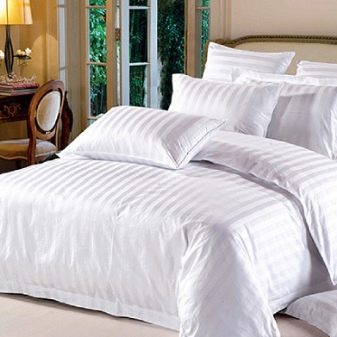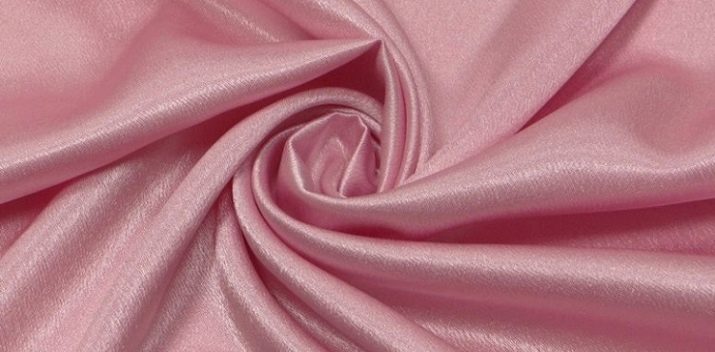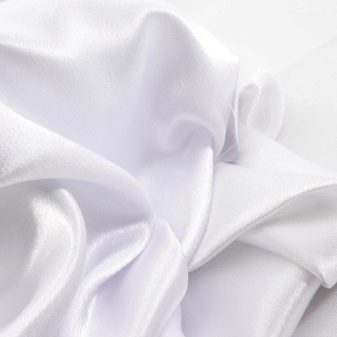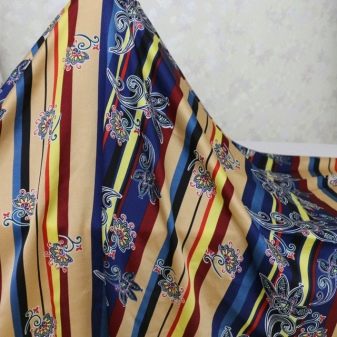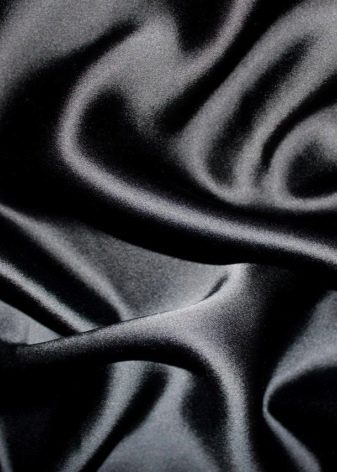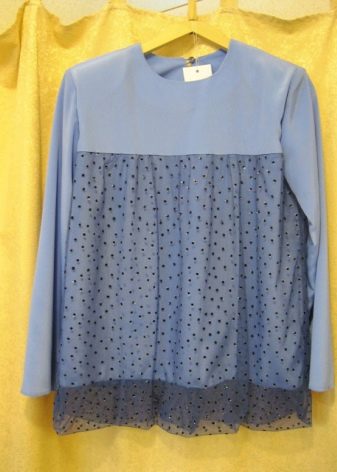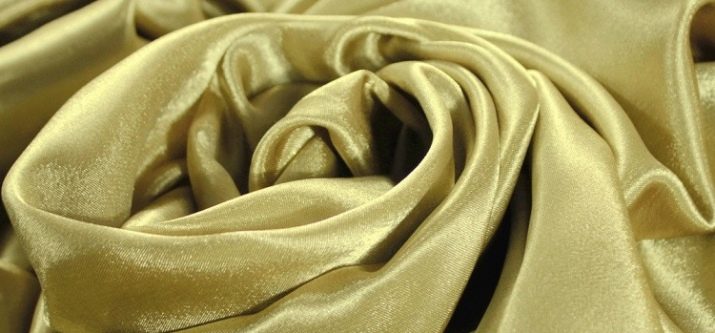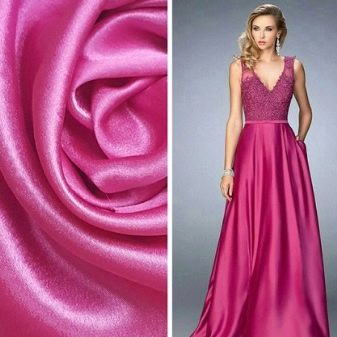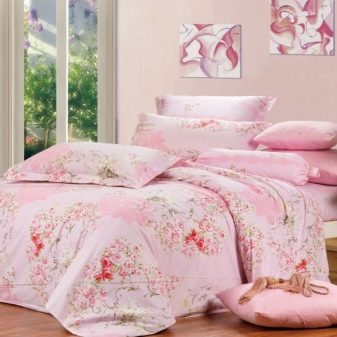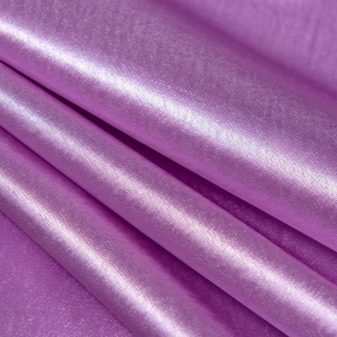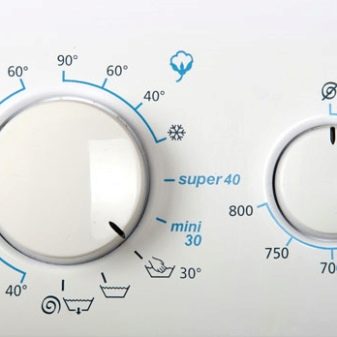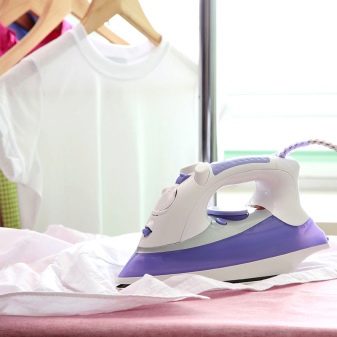Crepe satin: what kind of fabric, characteristics and application
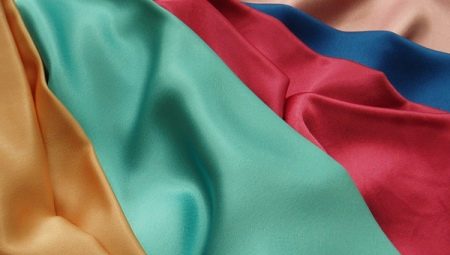
With a smooth surface and even unobtrusive gloss outside and fine-grained, pleasant to the touch from the inside - it is for these qualities that crepe-satin has been very popular among designers and fashionistas for more than a decade.
Composition and features
The material received its double name due to the fact that it looks like satin, but it is made by finely weaving, characteristic of crepe. Distinctive features of the fabric are the predominance of weft yarns in it (3-4 into 1-2 basic) and different thickness of weft fibers. It is the last factor that makes the fabric smooth and shiny on the outside and rough on the inside. In this case, you can use either side or the other, depending on the effect you want to get.
Other characteristics of crepe satin include:
- strength;
- almost complete opacity;
- no stretching.
The elasticity of the material makes it easy to drape it into absolutely any folds.
Varieties
Originally raw material for crepe-satin served exclusively natural silk. But lately synthetic or semi-synthetic fibers have been replacing fairly expensive silk. Therefore, modern crepe satin can be made from both natural silk and polyester, viscose, cellulose or acetate silk.
Crepe satin can also vary according to the staining method. In this category, single-colored material (monophonic) and printed material - with a pattern. The color palette of the first varies from gentle pastel tones to bright, saturated colors. Print printed material can be very diverse: from small and large peas to a cage, a strip or any printed pattern.
Benefits
Thanks to its features, Crepe-satin has a number of positive qualities, including:
- the possibility of sewing from it a combination of clothing;
- ease of draping parts without additional bends and kinks;
- softness and comfort of garment parts made from this fabric;
- wear resistance of the material.
In addition, crepe satin products:
- keep their shape well;
- do not fade and do not fade with time;
- well ironed and practically not wrinkled when worn.
At the same time, crepe satin products have water-repellent properties, and dust does not accumulate on them.
disadvantages
Enumerating the benefits of fabric It is worth paying attention to those characteristics that relate to its shortcomings.
- The flowability of the material when cutting and sewing.
- "Slippery" that interferes when working with a cloth. Because of it, the material is often warped, which makes it very difficult to sew individual crepe satin parts.
- Propensity to form clues (puffs) with careless handling.
Additional disadvantages are fabric made from artificial fibers. Its main drawback is the inability to "breathe", which is why a person wearing a crepe-satin garment may experience discomfort and even irritation on the skin. In addition, the artificial material has a negative property common to all synthetics - it accumulates static electricity.
Scope of application
Decorative and positive qualities of crepe satin give a wide scope of imagination and allow you to use it for various purposes, for example, for tailoring:
- stage costumes;
- clothes;
- bed linen;
- home wardrobe items;
- curtains;
- bedspreads and covers for sofas and armchairs.
Most often, the material is used to make dresses, skirts, blouses, and light suits.At the same time, the richness of the color palette allows you to sew clothes for everyday wear in the office, and for special occasions (evening and wedding dresses). In the latter case, crepe satin is combined with lace and decorated with drape. Soft folds and flowing fabric ideally fall on any shape, emphasizing its advantages and hiding shortcomings.
Bed linen from crepe-satin, in turn, not only decorates the bed, but also gives a feeling of softness and coolness, allows you to relax. Crepe-satin is also widely used in decorating various restaurants, hotels, banquet halls, theater lobbies. Its presence allows not only to decorate the interior, but also to make it richer, more noble. In addition, crepe satin is used for the manufacture of various accessories, in particular, for wrapping ladies' shoes and handbags, and sometimes it can be found as a lining fabric or a cover for clothes.
Selection rules
If you are going to buy a piece of crepe satin or finished products made from this fabric, you should focus not only on the description of the material, but also on some nuances. So, in order not to acquire at all what is necessary, it is necessary to pay attention to the following factors.
- Crepe satin - quite dense material. To check the proposed fabric, it is enough to stretch it and look through it at the light. High-quality material practically does not shine through. In the same way you can check and finished products from this fabric.
- Strong smell. If the fabric smells unpleasant, it may mean that cheap, low-quality dyes were used to dye it. In this case, the purchase is better to refuse, because the use of such substances can not only affect the quality of the material (it can fade or burn out), but also on health (act as an irritant on the skin).
- Cost Real crepe satin made of natural silk can not be cheap. The material of artificial fibers will cost much less, but high-quality synthetic fabric has its own price range, which can not be called very cheap. If the crepe satin is sold at very bargain prices, then this is either a completely different material or a product of unscrupulous manufacturers using low-grade fibers of unknown origin as raw materials.
It should be noted that high-quality synthetics in most characteristics is in no way inferior to natural material, therefore, if there is no fundamental difference, you can purchase products made from synthetic crepe-satin. They will look no worse, and they will last no less than real silk.
Care of the material
Care for crepe satin products does not require a lot of time and effort. However, in order for the fabric to retain its beautiful and rich appearance for as long as possible, it is worth remembering some nuances.
- Wash things from this material by hand in warm (30-40 ° C) water. Machine washable in delicate mode with minimum spin.
- During washing the product does not rub and do not pull.
- The use of bleaching and stain removers is prohibited.
- Wash crepe-satin products should be mild detergents (for delicate fabrics). Gels are best suited for this.
- After washing, the products are not unscrewed, but squeezed easily and simply let the water flow.
- For drying things from crepe-satin straighten and hang on the hangers. Under natural conditions, the fabric dries quickly.
- If necessary, crepe satin can be ironed. But they do it from the inside by setting the iron regulator to “silk”. In this case, iron things best before they are completely dry. If the thing is dry, you can use a slightly wet ironing. It is not recommended to spray water directly on crepe-satin products, as stains remain on the fabric from water.
- In addition, when worn products made from this material, you must protect them from contact with sharp objects that can leave a puff.For these reasons, you should not hang crepe-satin things next to clothes that have zippers or metal ornaments.
In the next video, you can look at the crepe-satin fabric closer.

